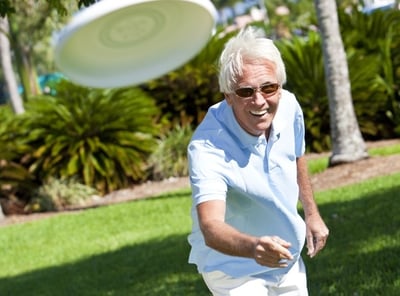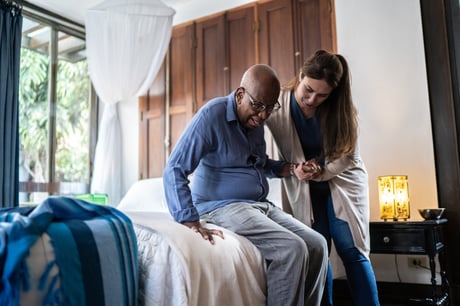 In sharing the many benefits of living in a senior living community with seniors, I often receive the response “I want to live in my home as long as I possibly can”. Making sure you are active and healthy can improve your life to maintain that desire to remain in your home. Below are 4 tips to consider before making that important decision.
In sharing the many benefits of living in a senior living community with seniors, I often receive the response “I want to live in my home as long as I possibly can”. Making sure you are active and healthy can improve your life to maintain that desire to remain in your home. Below are 4 tips to consider before making that important decision.
1. Decide exactly where you want to live.
The ultimate goal of aging in place is to maintain your independence and avoid moving. But if your current home has too many stairs, you live far from public transit, or you’re located too far from emergency help, consider a senior living community. After all, isolation is a major issue for older adults, and maintaining social connections should be a priority when considering where you will spend your golden years. Weigh your options carefully for considerations like dining venues, activities and outings you enjoy and whether it has fitness amenities and professional staffing to help you remain physically active.
2. Adapt your home.
If you chose to stay at home, you need to make sure it will be suitable for you. A safe environment is critical to healthy aging. Home modifications can easily make a living space more accessible and comfortable. Plan ahead so modifications will already be in place when you need them such as extra handrails, walk in shower access, removing trip hazards, etc.
3. Explore technology solutions.
Technology can be a key tool to keep you connected with the wider world. And there are many computers, tablets and cell phones suitable for older adults that can be made more senior-friendly with a few adjustments.
Voice-controlled assistive devices like Google Home and Amazon Echo can allow you to set medication reminders or control your home's temperature or lighting with simple verbal commands. Such devices can also place phone calls, read books aloud, or play music. Video doorbells that enable you to see who’s at the door without opening it and sensor systems that can detect falls and alert emergency contacts can be very handy for older adults who live alone.
4. Consider hiring a companion or in-home caregiver.
You may need extra support to remain in your home, such as help with household chores or personal care. Companion care can be a good solution for seniors who need more social interaction or require help with tasks like cooking, cleaning, getting to appointments, or shopping for groceries. And home care services can assist with bathing, dressing, taking medications, and more. Using these types of services can give you the support you need to remain in your home safely.
Aging in place is all about optimizing your environment in a way that lets you live where you want as long as you possibly can. Healthy aging doesn't necessarily mean avoiding physical challenges, but it does mean being prepared to deal with those challenges by making the necessary modifications to your lifestyle or living space. You can help ensure that you are well-positioned to enjoy your golden years in comfort by planning ahead.
All these tips can also be beneficial while living in a Senior living community. They are going to make your daily activities and routines easier, more attainable, and safer.
How will you plan for your future?


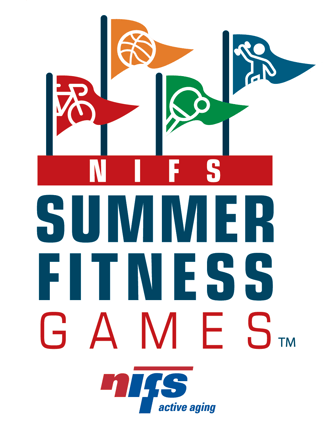 Every 4 (or 5) years a special summer event comes around that makes us all want to feel like an athlete. This year, residents in CCRCs from Minnesota to Florida showed that they have what it takes to compete in the NIFS Summer Games. NIFS fitness staff put together 8-10 different events that residents could compete in over the course of the Games. On the surface, this program looked like a way to celebrate the summer, but there was certainly more intention behind the design.
Every 4 (or 5) years a special summer event comes around that makes us all want to feel like an athlete. This year, residents in CCRCs from Minnesota to Florida showed that they have what it takes to compete in the NIFS Summer Games. NIFS fitness staff put together 8-10 different events that residents could compete in over the course of the Games. On the surface, this program looked like a way to celebrate the summer, but there was certainly more intention behind the design.
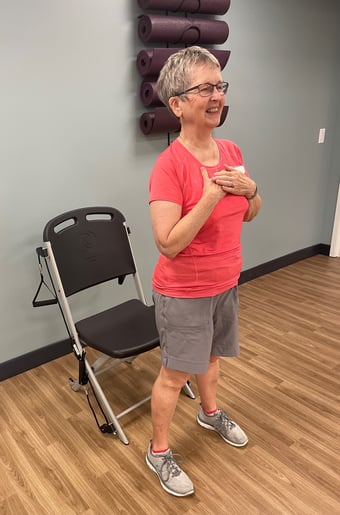 This summer, eight different NIFS fitness managers lead their residents through the Sit-to-Stand Challenge. Residents were asked to set a goal each day and complete a certain number of sit-to-stand exercises. They could group them all together or break them up throughout the day. The program was received with much enthusiasm as residents completed an average of 367 sit-to-stands per person during the month!
This summer, eight different NIFS fitness managers lead their residents through the Sit-to-Stand Challenge. Residents were asked to set a goal each day and complete a certain number of sit-to-stand exercises. They could group them all together or break them up throughout the day. The program was received with much enthusiasm as residents completed an average of 367 sit-to-stands per person during the month!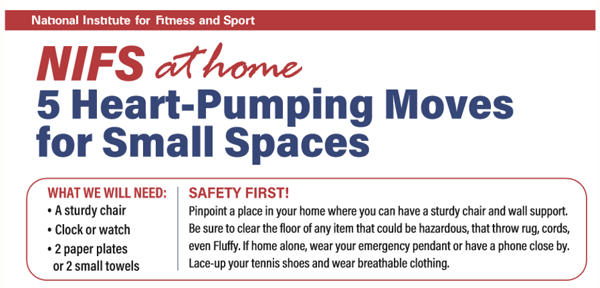
.jpg?width=404&name=GettyImages-1135376317%20(1).jpg) While practicing social distancing remains a priority for everyone, finding ways to stay physically active should also remain a priority. This is particularly true for older adults who may find themselves feeling increasingly isolated and vulnerable to remain safe. Exercise has long proven to provide numerous health benefits both for your physical well-being as well as your emotional well-being including:
While practicing social distancing remains a priority for everyone, finding ways to stay physically active should also remain a priority. This is particularly true for older adults who may find themselves feeling increasingly isolated and vulnerable to remain safe. Exercise has long proven to provide numerous health benefits both for your physical well-being as well as your emotional well-being including:
.jpg?width=368&name=GettyImages-1047684930%20(1).jpg) When it comes to programming options in senior living, NIFS understands that communities strive to create a memorable experience for residents and their families all year long, which is why we are excited to bring clients the NIFS Legacy program. This is a simple one, but with a memorable result. We are inviting each resident to participate by handwriting answers to simple life questions and to have their photo taken to create a nostalgic piece that will then be transformed into a keepsake for the resident to share with their family.
When it comes to programming options in senior living, NIFS understands that communities strive to create a memorable experience for residents and their families all year long, which is why we are excited to bring clients the NIFS Legacy program. This is a simple one, but with a memorable result. We are inviting each resident to participate by handwriting answers to simple life questions and to have their photo taken to create a nostalgic piece that will then be transformed into a keepsake for the resident to share with their family.
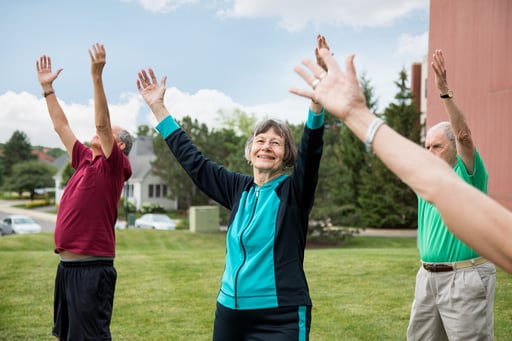

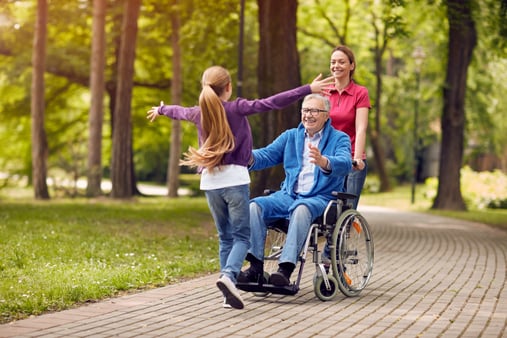 If you tend to be in a certain age category, you’ve most likely thought about caregiving for a loved one. Whether that be for your parents, siblings, children, other relatives or even friends, it can take on a life of its own. Caregiving is no easy task, so fully thinking through how this may play out in your life is a good idea (even if it is overwhelming). By planning ahead and being realistic about the situations in your life, you stand a better chance of decreasing the upfront stresses when you step into a caregiver role.
If you tend to be in a certain age category, you’ve most likely thought about caregiving for a loved one. Whether that be for your parents, siblings, children, other relatives or even friends, it can take on a life of its own. Caregiving is no easy task, so fully thinking through how this may play out in your life is a good idea (even if it is overwhelming). By planning ahead and being realistic about the situations in your life, you stand a better chance of decreasing the upfront stresses when you step into a caregiver role.